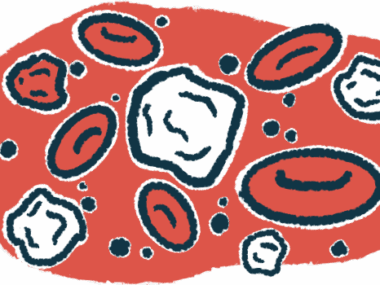New method to detect lactoferrin may be dry eye disease severity biomarker
Iron-binding protein's levels lower in DED related to Sjögren’s syndrome
Written by |

A new photo-detection method was able to accurately and quantitatively measure lactoferrin levels in the tears of people with dry eye disease (DED) associated with Sjögren’s syndrome or other conditions, a study shows.
The method also let researchers distinguish patients with DED caused by Sjögren’s from other DED patients. Lactoferrin is an iron-binding protein found in tears and is reduced in DED, and associated with disease severity.
“Our cost-effective, antibody-free, highly sensitive photo-detection device for evaluating tear lactoferrin levels can assist ophthalmologists in differentiating different types of dry eye diseases,” the researchers wrote in “Fluorescence-based reagent and spectrum-based optical reader for lactoferrin detection in tears: differentiating Sjögren’s syndrome from non-Sjögren’s dry eye syndrome,” which was published in Scientific Reports.
Sjögren’s syndrome is an autoimmune disorder that primarily affects the glands that produce tears and saliva, leading to dryness in the eyes and mouth. Eye dryness may have other systemic and local causes, however, but when it’s caused by diseases like Sjögren’s, it often requires systemic treatment. Distinguishing DED associated with Sjögren’s from DED due to other causes based solely on symptoms can be difficult, however.
According to researchers, the “identification of an early biomarker and effective testing device to differentiate dry eye disease secondary to … Sjögren’s syndrome … from non-Sjögren’s dry eye disease are prerequisites for appropriate treatment.”
Measuring lactoferrin in tears
Here, researchers in Taiwan used a new photo-detection device to measure lactoferrin in the tears of patients with and without DED to test whether the device could differentiate systemic conditions associated with DED based on lactoferrin levels. A total of 54 patients with non-Sjögren’s DED, 52 with Sjögren’s DED, and 11 healthy people were included in the analysis.
The Schirmer tear test, which assesses tear production, showed increased eye dryness in the two patient groups. The Ocular Surface Disease Index (OSDI), a questionnaire for subjectively evaluating DED where higher values indicate worse symptom severity showed Sjögren’s patients had significantly higher scores than those with non-Sjögren’s DED.
Lactoferrin levels were evaluated using a standard antibody-based test for detecting the human protein and the new photo-detection device. The detection method involves adding a compound called terbium(III) chloride (TbCl3) to a patient tear sample. When TbCl3 binds to lactoferrin in tear samples, it forms a complex that will emit fluorescent light. By measuring fluorescence intensity, it’s possible to quantify samples’ lactoferrin levels.
Lactoferrin detected using both methods were highly correlated, the researchers observed. Average levels were significantly lower in those with Sjögren’s DED (0.087 mg/mL) and non-Sjögren’s DED (0.337 mg/mL) compared with the healthy controls (1.272 mg/mL). Lactoferrin was also lower in Sjögren’s patients than in non-Sjögren’s DED patients.
Tear lactoferrin levels were significantly associated with OSDI and the underlying cause of DED, further analysis indicated. After adjusting the analysis for age and DED severity, lactoferrin remained associated with the underlying cause of the disease.
“In the present study, we developed a convenient, rapid, and economical method to detect tear lactoferrin levels for potential use as a biomarker to assist the assessment of DED severity, provide the clue in investigating the autoimmune diseases [causes] and determine the proper treatment,” the researchers wrote. “Further studies with larger numbers of patients, longitudinal evaluations, and patients with different types of associated [autoimmune] diseases are needed to help validate our findings and investigate the potential clinical application of this device.”






